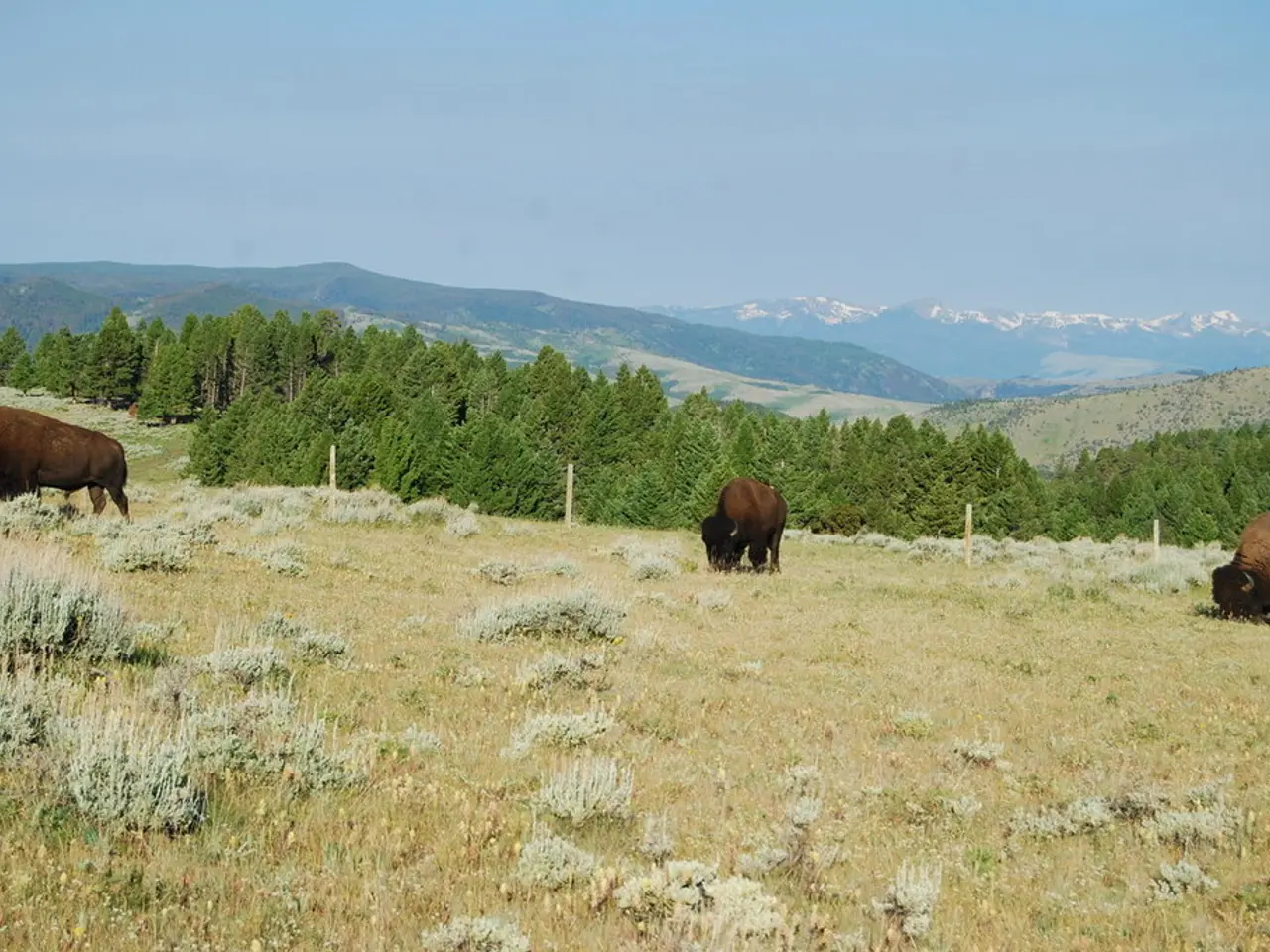Comprehensive guide for capturing stunning animal images in the wild
In the world of nature photography, capturing the beauty and essence of wildlife requires careful planning, understanding, and technique. Here are some essential tips to help you get started on your wildlife photography journey.
Firstly, researching the subject thoroughly is crucial to ensure the welfare of the animal and to avoid disturbing their natural habitat. Learning about the subject's habitat, diet, behavior, and movement patterns will not only help you anticipate photographic opportunities but also respect the animals and their environment.
When it comes to camera settings, shooting in Shutter priority mode (S or Tv) can be a good starting point for wildlife photography. This mode allows for control over the shutter speed while the camera determines the aperture and ISO speed settings. For fast-moving subjects, a fast shutter speed, such as 1/500s, is a good starting point. For very fast movements, opt for 1/1000sec or above.
Focus needs to be spot-on for sharp wildlife shots. The single-point AF setting and continuous AF tracking are preferred methods. These techniques help to track moving wildlife and maintain sharp focus, ideally focusing on the animal’s eyes if possible.
The background setting of a wildlife image is important, as it can completely change the look of an image. A plain background can frame the subject well in an animal portrait. However, in some circumstances, a slower shutter speed can be more appropriate, such as capturing the motion of flocks of birds or panning with a moving animal to blur the background.
Advanced cameras offer features optimized for wildlife photography, including high-resolution sensors, excellent autofocus systems, and good low-light performance. However, mastering settings and technique is key regardless of gear. Understanding your camera’s ergonomics to quickly change settings like ISO, focus mode, exposure compensation, and metering without losing the shot opportunity is essential.
Protecting your gear from outdoor elements is also crucial, as wildlife photography often involves challenging environments. Using weather sealing, lens covers, rain sleeves, etc., can help ensure your equipment stays safe and functional.
Lastly, seeking out advice from experienced wildlife photographers can provide great inspiration. Examples include Mattias Klum, Will Burrard Lucas, Frans Lanting, and Amy Gulick. Studying the work of the Wildlife Photographer of the Year winners can also offer valuable insights into capturing impressive images.
In summary, these essential tips will help you maximize your chances of capturing sharp, well-exposed, and compelling wildlife images. Remember, technical perfection should not be the main aim of wildlife photography; many great images of animals have been captured which are slightly blurred. With patience, practice, and a respect for nature, you'll be on your way to capturing stunning wildlife photographs.
| Aspect | Tip | |---------------------|--------------------------------------------------| | Camera Settings | Shutter priority mode (S or Tv) | | Shutter Speed | 1/500s for fast-moving subjects; experiment | | Focus | Single-point AF, continuous AF tracking | | Background | Plain background for portraits; creative blur | | Equipment Protection| Use weather sealing, lens covers, rain sleeves | | Stability | Use tripod or beanbags | | Ergonomics | Know camera controls for quick adjustments | | Preparation | Research subject behavior and location |
- In addition to mastering photography techniques for wildlife, it's crucial to invest in education and self-development, seeking advice from experienced wildlife photographers such as Mattias Klum, Will Burrard Lucas, Frans Lanting, and Amy Gulick.
- For those interested in more than just wildlife photography, understanding the lifestyle, fashion-and-beauty, food-and-drink, home-and-garden, travel, and general-news aspects of a wildlife photographer's journey can offer valuable insights.
- While capturing stunning images is the goal, it's important to remember that sustainability and respect for the environment are equally important. Support conservation efforts, learn about endangered species, and practice ethical wildlife photography.
- To fully immerse yourself in the world of wildlife photography, consider expanding your knowledge beyond technical skills. Learn about the history of the field, explore the stories of iconic photographers, and even delve into the science of wildlife behavior. This holistic approach will enrich your photography and deepen your appreciation for the natural world.




